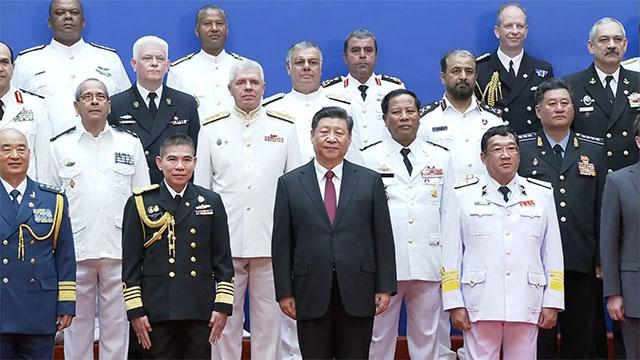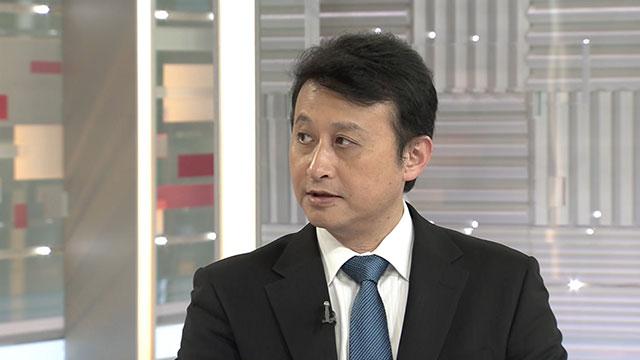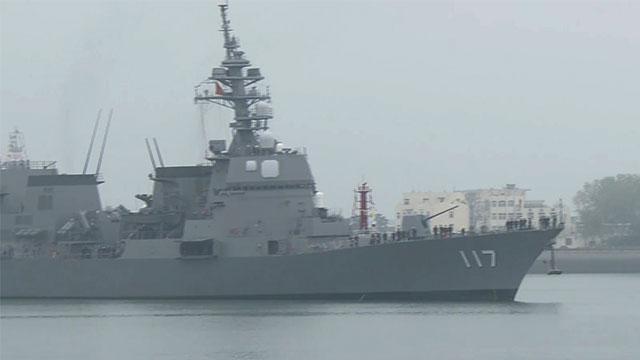President Xi Jinping boarded a destroyer, giving the order to start the parade as almost 40 fighter jets and bombers flew over the Chinese armada.
Among the 32 vessels was China's only active aircraft carrier, the Liaoning. A Type 055 destroyer, one of the largest of its kind in Asia, also made its debut. It's equipped with a high-performance radar system.

More than 60 countries sent naval delegations -- over double the number at the last parade, in 2009. In addition, 13 countries, including Japan, Russia, India and South Korea, sent 18 vessels.
China sends a message
China is showing the world its strength at sea. President Xi has called for the creation of a "world-class navy," and with the United States in mind he is rapidly expanding naval forces to establish China as a maritime power.
At the same time, Beijing is trying to ease international concerns about its military buildup.
President Xi addressed the delegations ahead of the event.
"All the countries of the world and their navies should work together and march forward hand in hand," he said. "We should discuss matters of vital importance, and we should work together to maintain maritime peace, establish maritime order and promote maritime prosperity. "

Understanding China's maritime capability
We asked Bonji Ohara what the parade has revealed about Chinese naval power. He is a former officer in the Japanese Maritime Self-Defense Force and now a Senior Fellow with the Sasakawa Peace Foundation.

He said the most notable vessel is the Type 055, a destroyer with a 12,000-ton displacement that can be equipped with rail guns, lasers and hyper microwaves. China has stated that the 055 destroyer is meant to show China's military presence in strategic missions.
Ohara said China also wanted to show its operational capability with a difficult maneuver for conducting a review of the ships.

The aircraft carrier Liaoning appeared with four destroyers, two frigates and a general supply ship. A miniature aircraft carrier strike group was present and J-15 fighter jets were placed on the Liaoning's flight deck in position ready for launch.
Concerns over China's expansion at sea
The parade comes amid increasing concerns expressed by the US and other countries about China's military buildup and maritime activities.
China is advancing its construction of domestically built aircraft carriers and aims to have at least four of them in the future.
In addition, China is extending its development of man-made islands in disputed waters in the South China Sea for use as military bases, and increasing its activities in the East China Sea.
It is also expanding its influence in other regions, including Djibouti in east Africa, an important base for securing sea lanes, where it is building its first overseas supply base.
The United States did not send a warship to the parade, which, Ohara said, shocked Beijing because it shows the US is opposing China, not only in trade, but also on the issue of security as well.
Japan's participation

Japan sent a vessel to the event for the first time in more than seven years. The MSDF's Chief of Staff, Admiral Hiroshi Yamamura, visited China for the first time in about five years.
Japan is trying to address China's increasing maritime activities. Chinese naval vessels have been seen between Okinawa and the Miyako islands as they travel to and from the Pacific and the East China Sea. There were three such events in April alone.
SDF fighter jets scrambled 638 times against Chinese aircraft in fiscal 2018 -- the second highest on record.

At the same time, Japan and China have been expanding military cooperation to avoid problems at sea.
In April last year, exchanges between the units of the SDF and the Chinese military resumed after a long period of suspension. China's senior officials visited SDF bases. Then in September, senior Japanese officials visited China to observe drills.
In February, a senior Chinese naval officer took part in a meeting hosted by an MSDF college for the first time in six years.
"It's now very clear how to resume exchanges of military units from the two countries," said Yamamura during his visit.
He also said now that a Japanese vessel has come to China, he wants to invite a Chinese vessel to Japan.

Toshiyuki Ito, a retired MSDF vice admiral and now a professor at the Kanazawa Institute of Technology Toranomon Graduate School, says China's stance is clearly changing.
Ito says China's move to improve ties with Japan is directly linked to the US-China relationship, which has soured.
He says, "It's like shaking hands with the right hand while making a fist with the left hand, as it's important to keep a channel open for dialogue."
Ito also says when tension is high at sea, it is important for the leaders of all organizations involved to meet and make sure tensions do not escalate further.

